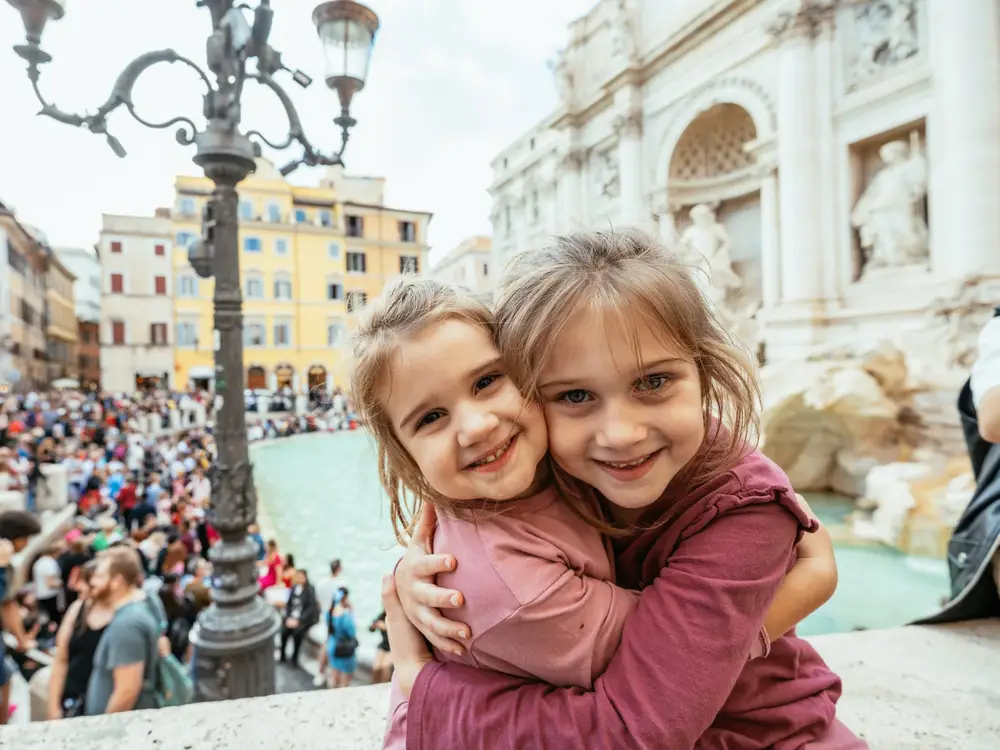I’m American and traveled to Europe for a month. I love how I can take my kids out for dinner late and no one bats an eye.

The author says that having doing activities with her kids in Europe is cheaper than in the US.
As a citizen of three countries, the United States, Poland, and Portugal, I am acutely aware of cultural differences. These differences extend to different attitudes towards raising children.
My children and I live in the United States but have visited Europe several times. This summer, we spent a month in Europe. I have long been aware of the many benefits available to most European families, such as paid paternal leave, subsidized childcare, guaranteed healthcare, and a different approach to education.
My time in Europe, although limited, has made me realize how many small differences there are that make life easier for families as well.
In the United States, I often feel like my children need to act like little adults. If I don’t feel like my kids are up to being on the best behavior, I need to seek out kid-friendly activities that center around them. If I bring them along anyway, a lot of the joy is gone for me. I am constantly worried about how my children will be perceived just for behaving the way children typically do. When this happens too frequently, we all miss out.
However, in Europe, I find that children are welcomed into adult spaces. They are more fully integrated into daily life. That makes things easier, and more enriching, for everyone.
Children often get free admission to museums
In the United States, visiting a museum, aquarium or zoo can easily cost more than $100. This is cost-prohibitive for many families. As a result, many children miss out on enriching and educational experiences. In Europe, children often receive free admission to museums or have to pay a nominal fee equivalent to a few dollars.
While visiting an educational attraction in the United States is often a special event families need to budget for, in Europe children are welcomed into many similar places with open arms. In practice, this means my kids may miss out on pricey experiences at home, no matter how enriching they may be.
In Europe, I was able to take my children to several museums to see a few highlights before leaving without feeling guilty that I had dropped a bunch of money for an hour or two. For example, in Vienna, Austria I was thrilled that my family could visit Belvedere Palace without paying for my kids. There, we saw Gustav Klimt’s sparkling painting “The Kiss” and explored the gardens before moving on to our next stop.
Even more than saving money, the fact that children are allowed in free of charge signals to families that their kids are welcome, even in formal spaces, and that society recognizes the value of creating well-rounded children.
Transportation is affordable for families
I love traveling by train and getting around without a car whenever possible. However, in the United States, it’s often cost-prohibitive to do so.
The last time I looked into taking Amtrak from where I live in Washington, DC to New York City, not only was the schedule not ideal but tickets were several hundred dollars for a relatively short trip. It was far less expensive and more convenient to drive.
In Europe, I found that there are often great fares for families traveling together by train or substantial discounts for children. This summer, two of my children and I rode in first-class seats from Rome to Venice for just $66 total. The price included snacks and non-alcoholic beverages. Although a Eurail pass didn’t make sense for my recent trip, passes are free for children and I am considering planning another trip before my kids age out. In London, my kids rode the tube and busses completely free of charge.
While I often feel like I have to keep my kids quiet when traveling in the United States, in Europe families may find a fully equipped playground on their train. Even though getting to Europe requires a long flight, I find that once I am there traveling with kids is so much easier.
Kids are out later
At home, I often get dirty looks if I bring my kids into a restaurant late at night. At times, I’ve gotten snide comments just for going out for a walk with my kids past 9:00 pm.
In Europe, my family is often out late because we spend our days trying to fit in more than we should. We often eat dinner well past my kids’ bedtime. Yet, in Europe, I noticed that kids are more easily integrated into nightlife. While I wouldn’t take my kids to a rowdy bar, no one batted an eye when I took my kids into an upscale restaurant in Krakow, Poland close to 10:00 p.m. We also saw plenty of children out and about after dark in every city we visited. I understand the value of having time away from kids. However, I appreciate that kids are more easily integrated into nightlife in Europe.






